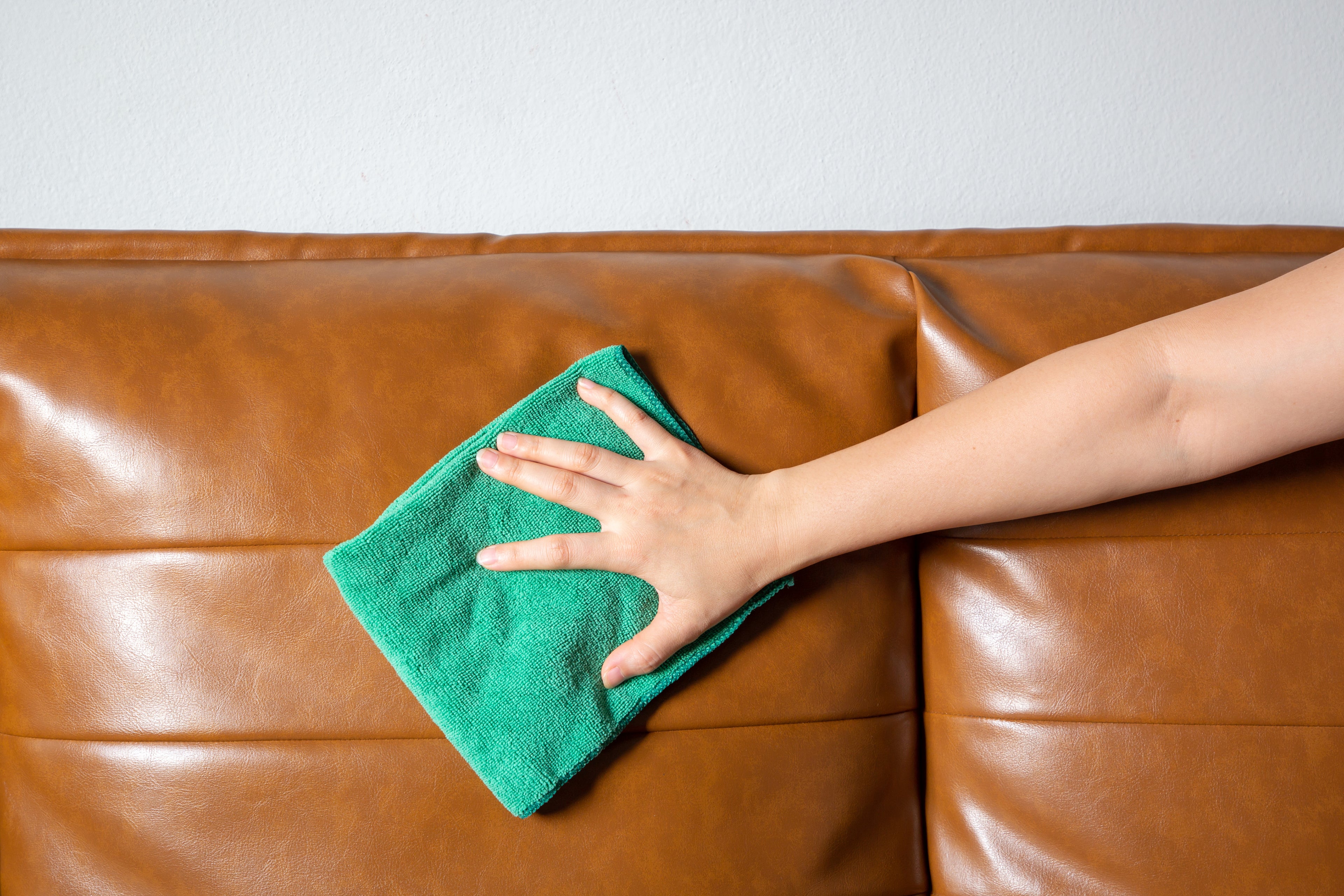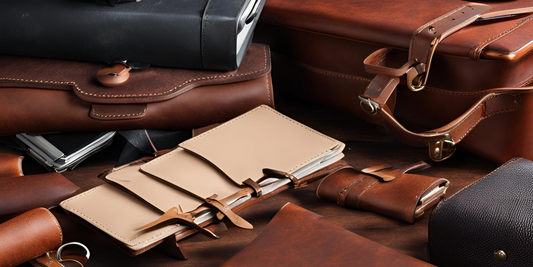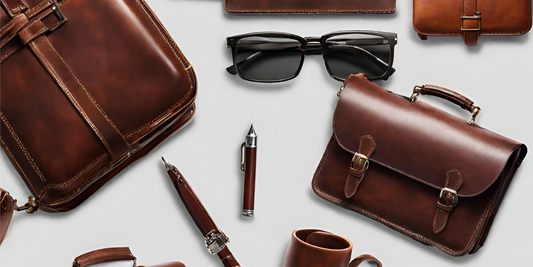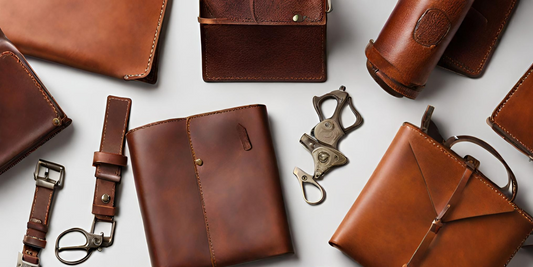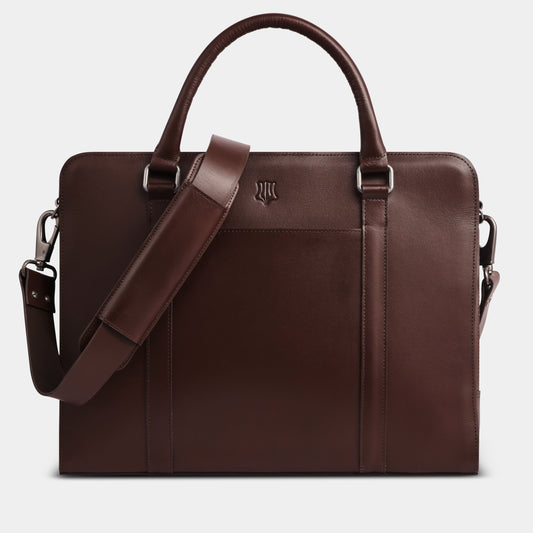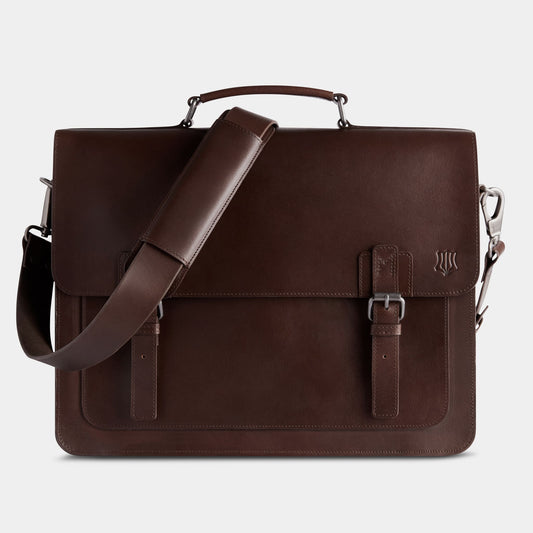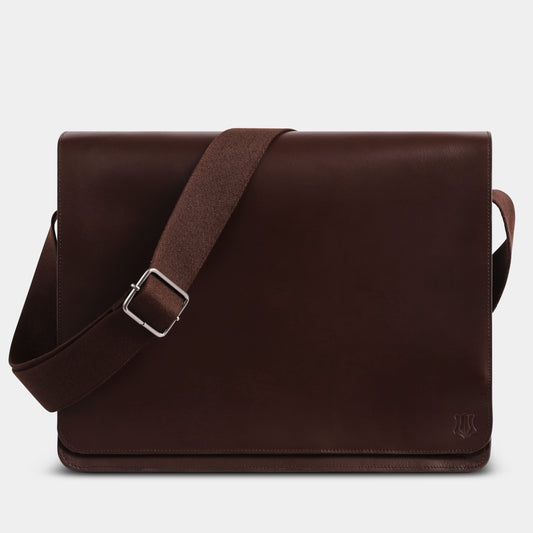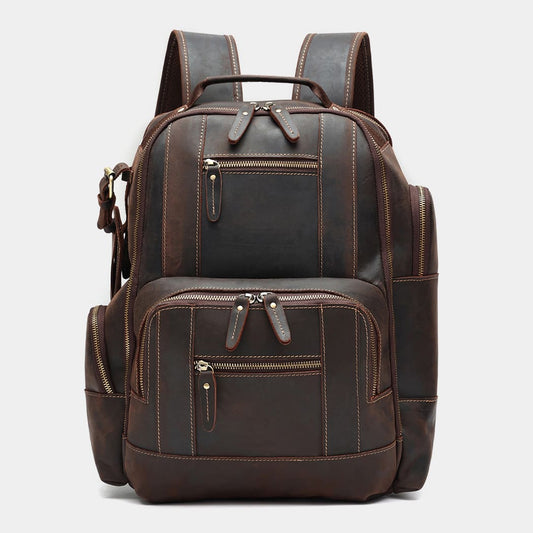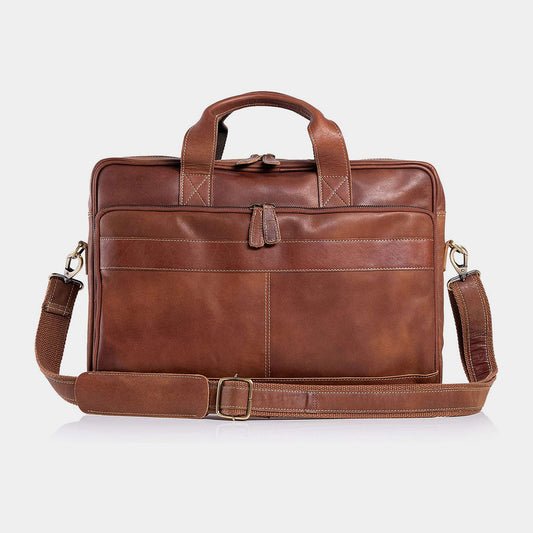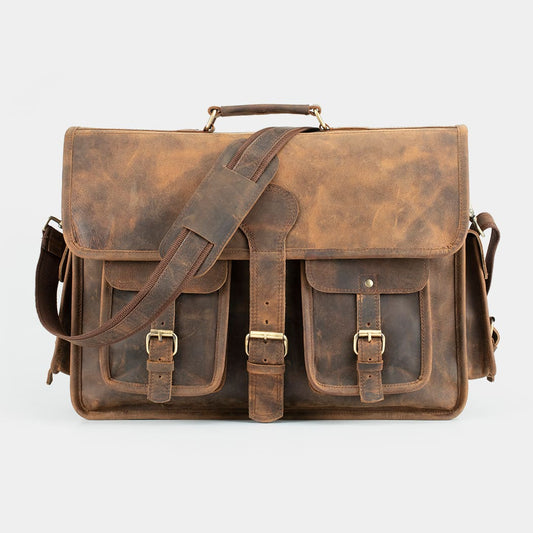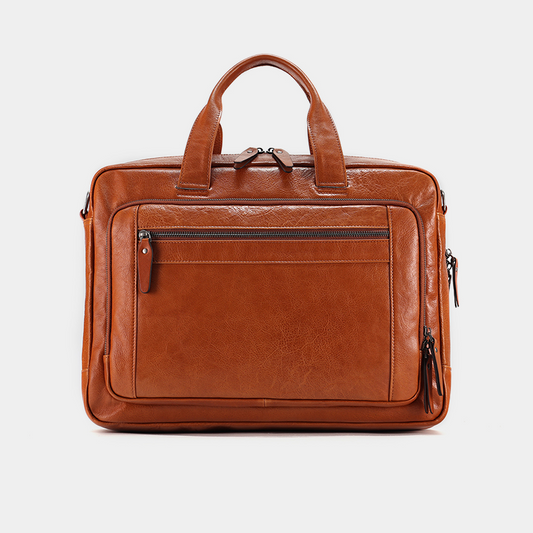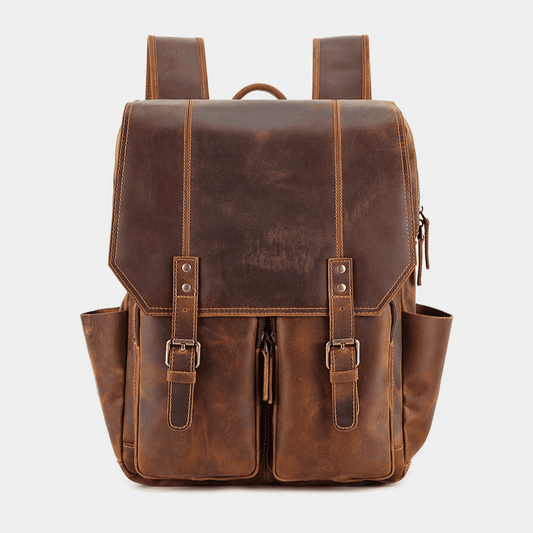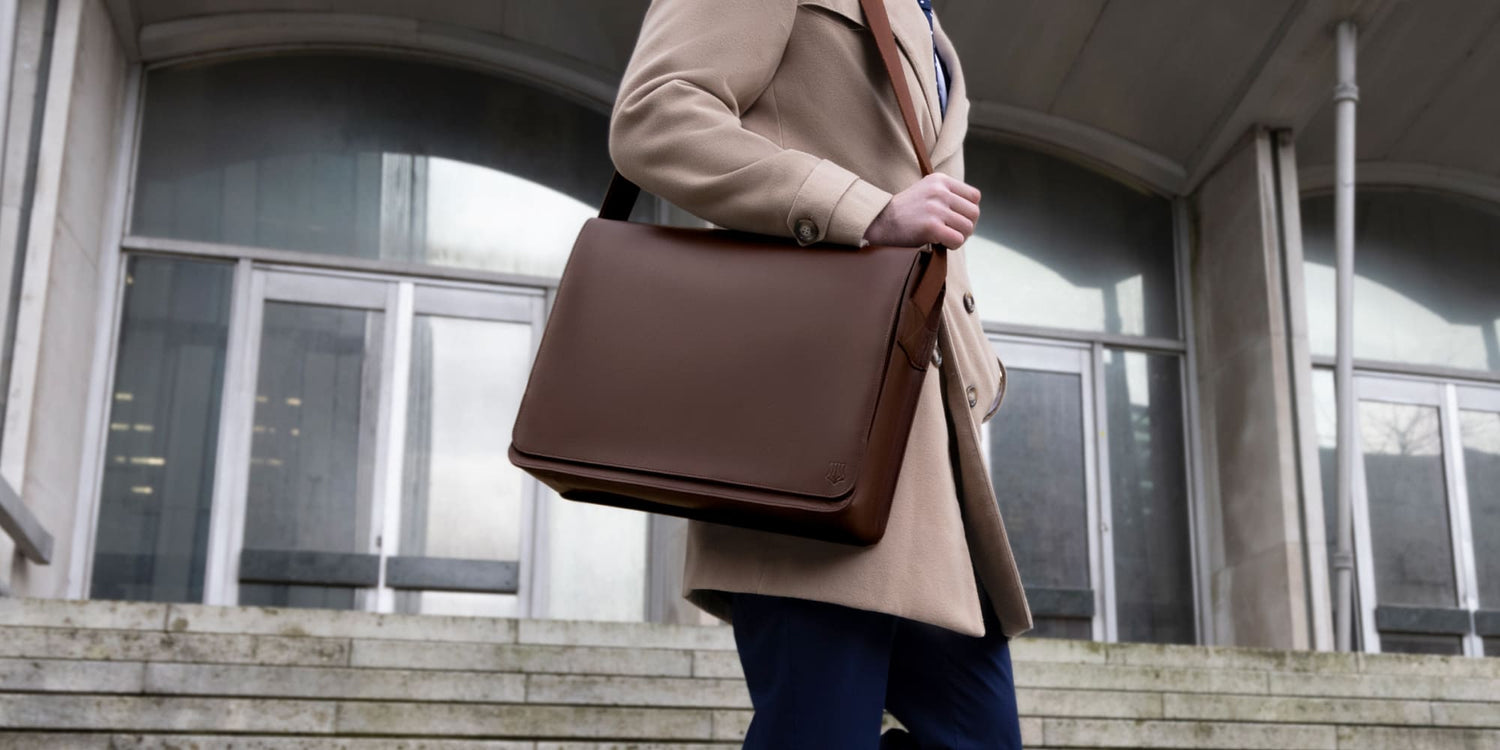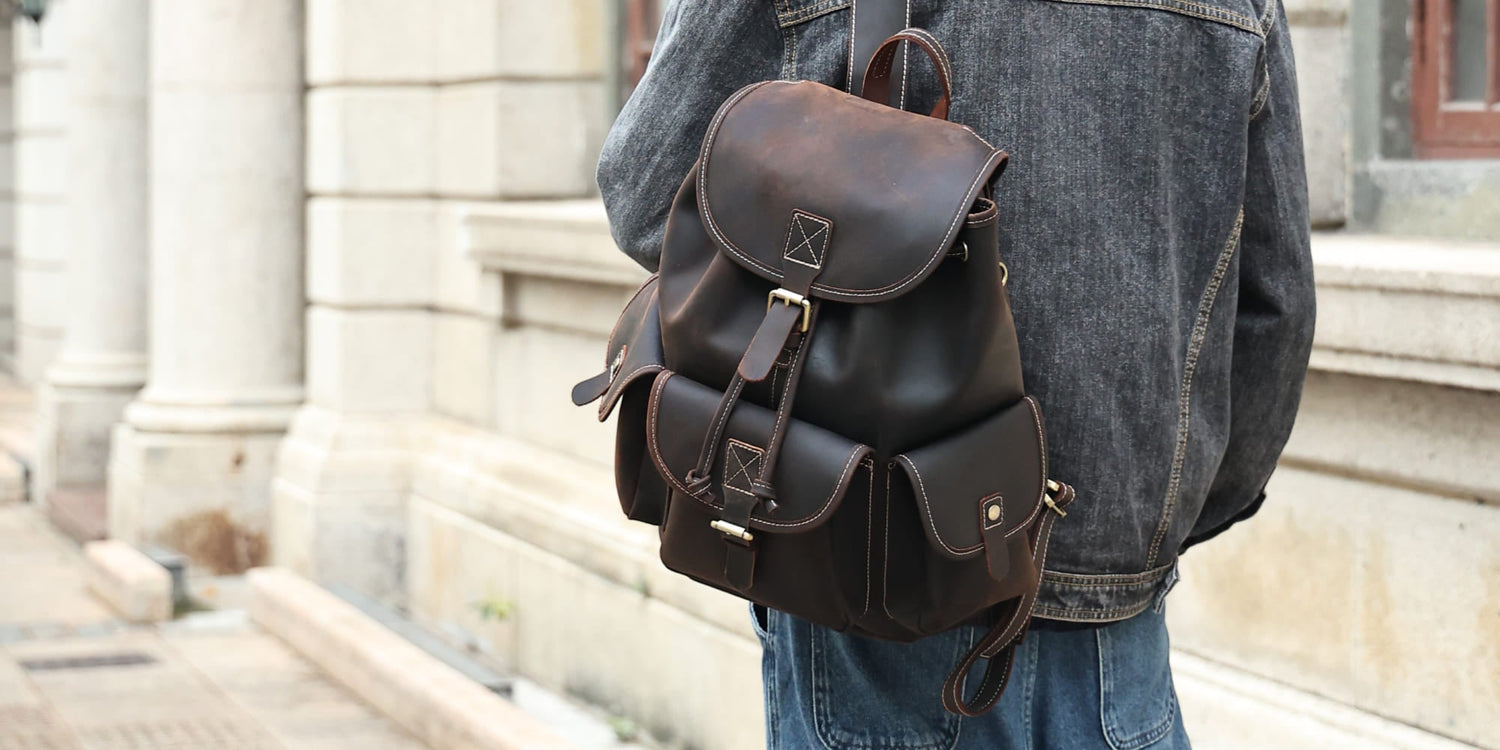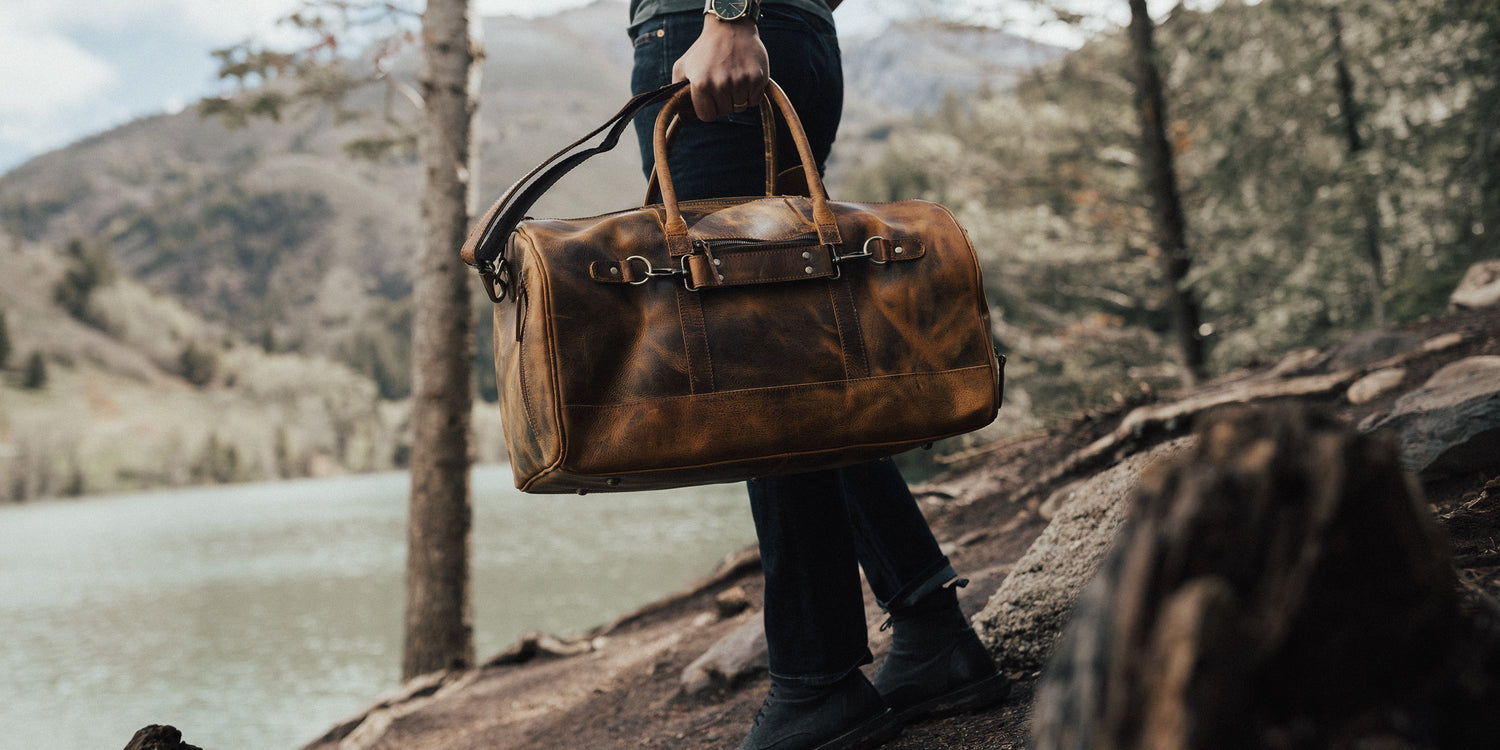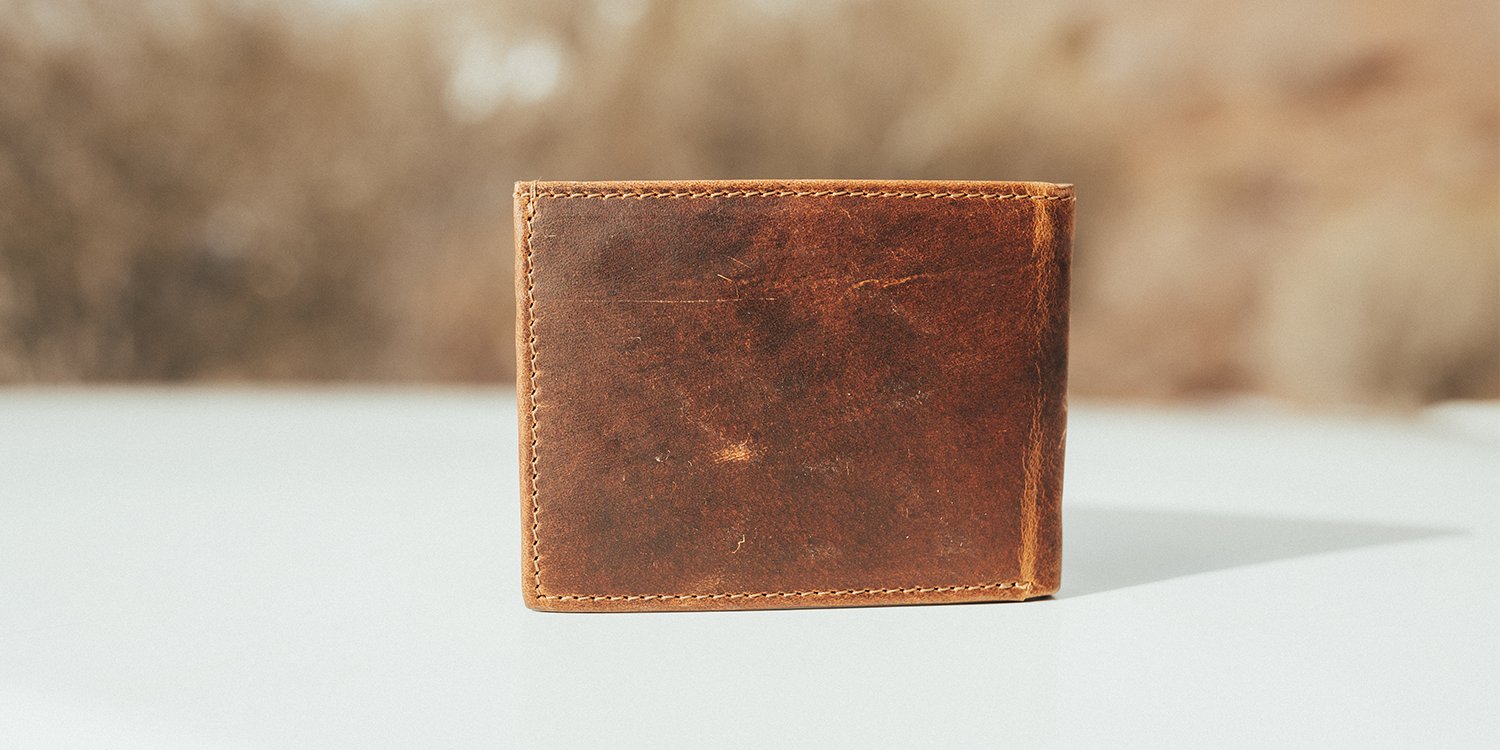Unlock the secrets to pristine leather care!
From the supple luxury of full grain to the delicate allure of suede, mastering leather maintenance is easier than you think.
Dive into our expert guide and discover the essential tips and tricks to keep your leather goods looking flawless for years to come.
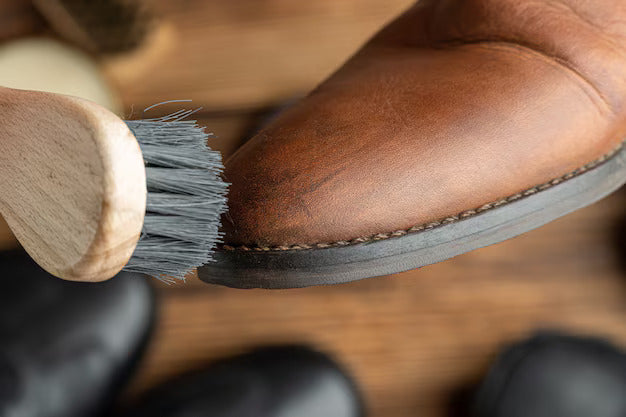
Understanding Leather Types
When it comes to cleaning leather, one of the crucial steps is understanding the type of leather you're dealing with.
Not all leathers are created equal, and different types require different cleaning methods to ensure they're properly cared for.
Here's a breakdown of the most common leather types you might encounter and how to clean them:
1. Full Grain Leather
This type of leather is made from the top layer of the hide, making it durable and highly sought after for its natural beauty.
Full grain leather tends to develop a rich patina over time.
To clean full grain leather, use a damp cloth to wipe away dust and dirt.
Avoid using harsh chemicals like bleach or nail polish remover, as they can damage the leather's natural oils.
2. Top Grain Leather
Top grain leather is similar to full grain but has been sanded or buffed to remove imperfections, resulting in a smoother surface.
Cleaning top grain leather follows similar principles to full grain leather, using a damp cloth for regular maintenance.
3. Split Leather
Split leather is created from the lower layers of the hide and is generally less durable than full or top grain leather.
It's often used in products like suede or bonded leather.
Cleaning split leather requires more care, as it can be sensitive to moisture and grease stains.
Use a soft brush or cloth to gently remove dirt and stains, and consider using a suede brush for suede leather.
4. Aniline Leather
Aniline leather is dyed with soluble dyes without covering the surface with a topcoat or pigment.
This type of leather retains the natural texture and grain of the hide but is more susceptible to stains and fading.
Cleaning aniline leather requires gentle techniques and specialized leather cleaners designed specifically for aniline leather.
5. Pigmented Leather
Pigmented leather has a protective coating or pigment applied to the surface, making it more resistant to stains and fading.
This type of leather is commonly found in leather couches and car interiors.
Cleaning pigmented leather is relatively easy and can be done with a mild soap and a warm water solution or a leather cleaning solution specifically formulated for pigmented leather.
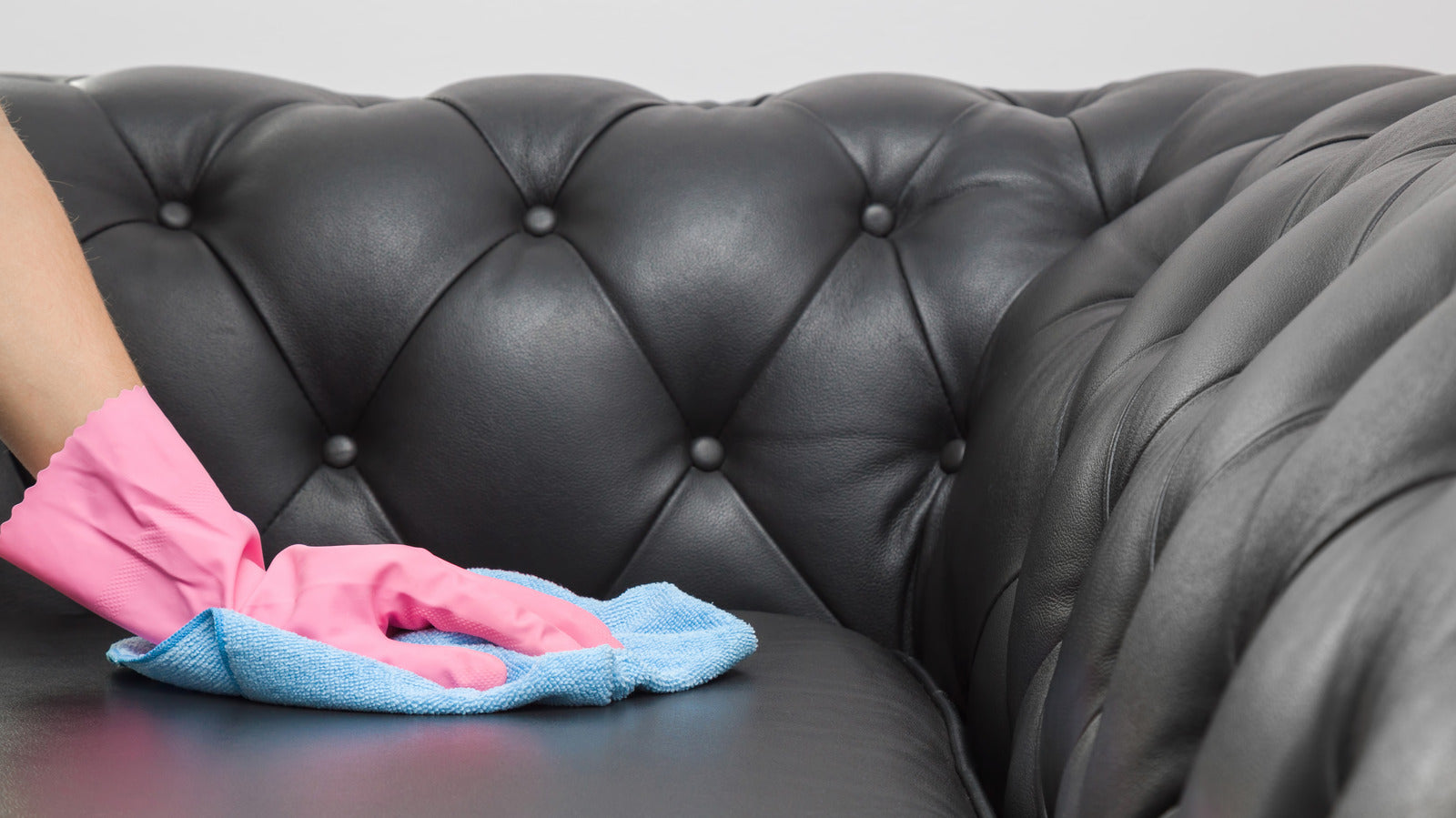
Leather Cleaning Essential Tools
Cleaning leather effectively requires the right tools and materials to ensure that you don't damage the surface or alter its appearance.
Here's a list of essential items you'll need to clean leather properly:
1. Soft Cloth or Sponge
A soft, lint-free cloth or sponge is essential for wiping away dust and dirt from the surface of the leather.
Microfiber cloths are ideal because they're gentle and won't scratch the leather.
2. Leather Cleaner
Choose a leather cleaner that is specifically formulated for the type of leather you're cleaning.
Avoid using harsh chemicals or household cleaners, as they can strip away the natural oils and damage the leather.
We also recommend staying away from placing leather goods in your washing machine.
3. Leather Conditioner
After cleaning, it's important to replenish the leather's natural oils to keep it soft and supple.
Choose a leather conditioner that is appropriate for the type of leather you have, and follow the manufacturer's instructions for application.
4. Water
In some cases, a damp cloth or sponge is all you need to clean leather.
However, it's essential to use distilled water to prevent mineral deposits from building up on the surface of the leather.
5. Soft Brush
For cleaning suede or nubuck leather, a soft brush with natural bristles is essential.
Use gentle, circular motions to lift dirt and stains from the surface of the leather without damaging the nap.
6. Lint Roller
A lint roller is handy for quickly removing pet hair and lint from leather surfaces, especially on furniture and clothing.
7. Protective Gloves
When using leather cleaning products, it's a good idea to wear protective gloves to prevent skin irritation and contact with harsh chemicals.
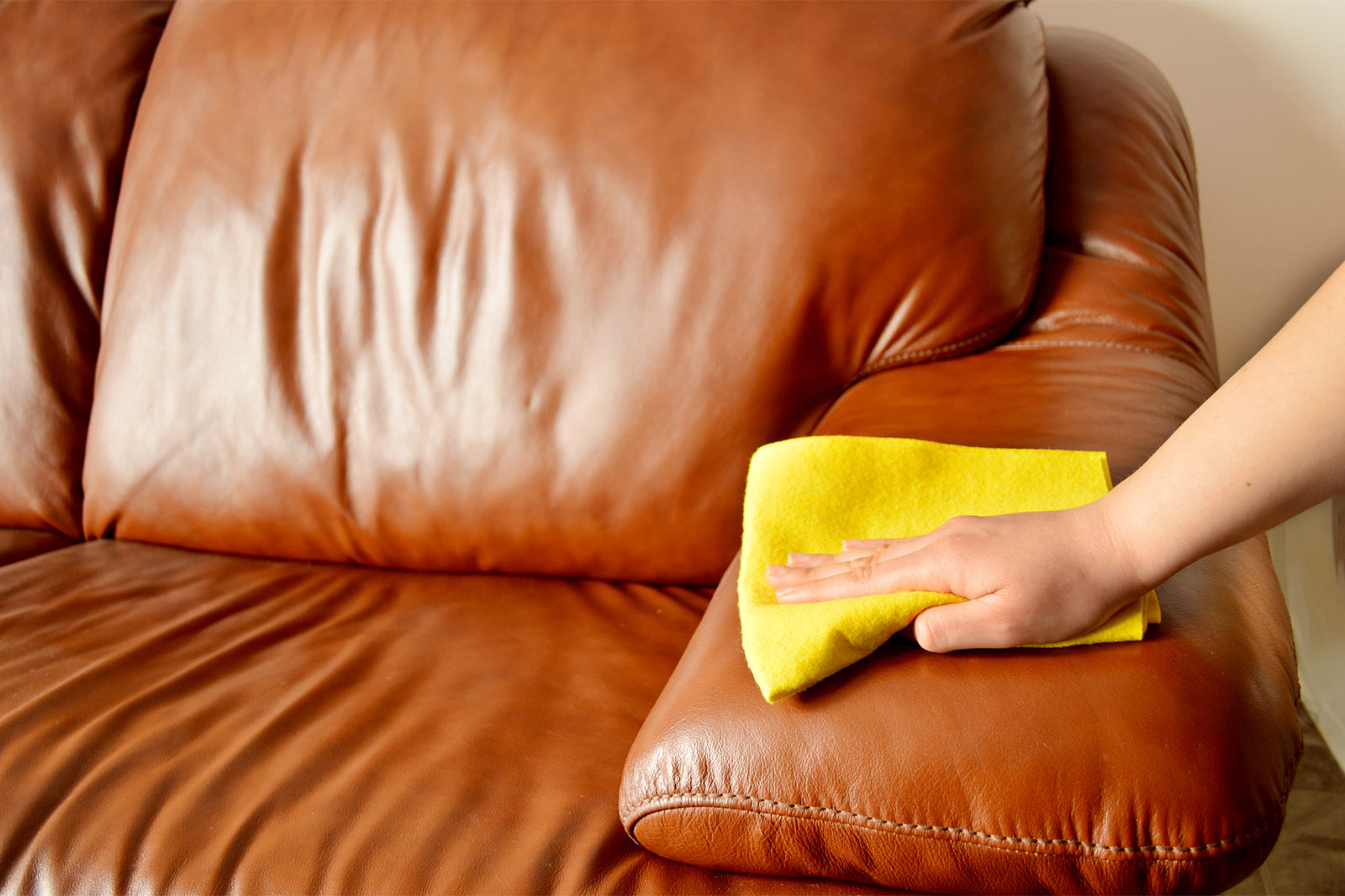
How To Clean Leather: Step-By-Step
The great news is that cleaning leather is easy and does not require expensive tools or lots of cleaning products.
Step 1: Prepare For Cleaning
Gather everything you need; a soft cloth, leather cream or conditioner, and clean water.
Before you apply it to the whole surface, you should always test a small amount of leather conditioner on a non-visible spot to check it won’t damage the leather.
Step 2: Surface Cleaning
Use a soft microfiber cloth to gently wipe down the surface, removing any loose dirt, dust, or debris.
Avoid using anything abrasive because it can cause damage to the leather.
Step 3: Cleaning Leather
Use a damp, soft cloth to wipe the surface all over.
Never use hard brushes or harsh chemicals on the material.
Make sure the leather doesn’t get too wet during this part of the cleaning.
Leather is water-resistant but not completely waterproof (even the highest quality leathers!).
Step 4: Drying
Always leave real leather to dry naturally.
Heaters or radiators can warp the material and cause leather bags. clothes or purses to lose their shape.
Choose a well-ventilated area where the leather can dry away from bright sunlight and unnatural heat sources.
Step 5: Leather Conditioning
Once your bag is dry and you’ve tested the conditioner on a small area of the material, it’s time to brighten up the material by applying a hydrating and nourishing cream.
Apply a small amount of the conditioning cream to a soft, clean cloth.
Massage the conditioner into your leather all over to bring back the material’s shine.
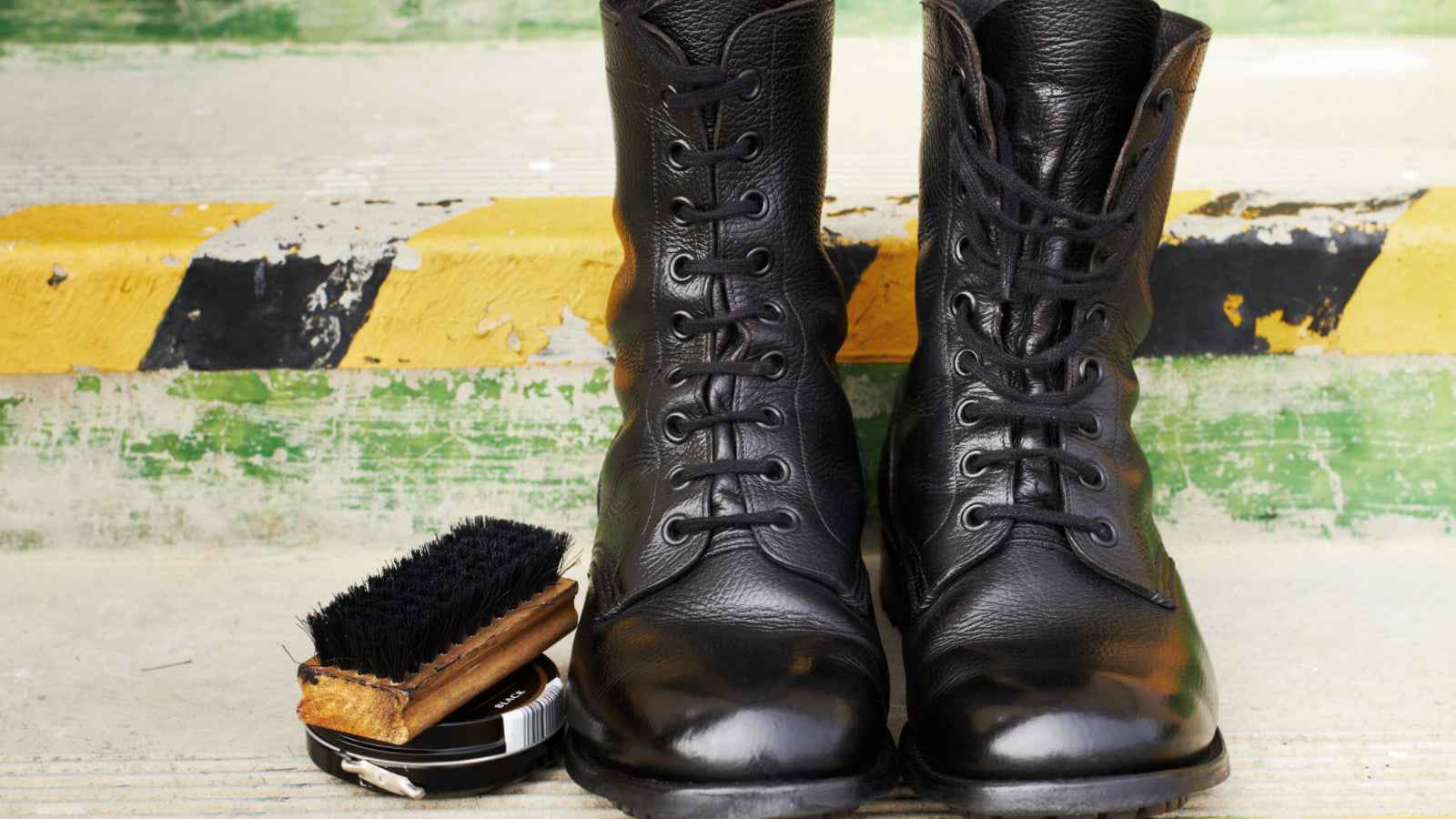
The Dos and Don’ts of Cleaning Leather
Dos:
- Do dust leather regularly with a soft cloth to prevent the accumulation of dirt.
- Do use gentle, circular motions to avoid damaging the surface.
- Do address stains and spills immediately to minimize the chance of permanent discoloration.
- Do use leather cleaners specifically designed for real leather.
- Do test any cleaning product on a small, inconspicuous area before applying it to the entire bag.
- Do store your leather goods in a cool, dry place when not in use, preferably in a dust bag or pillowcase to protect them.
- Do allow your leather goods to dry naturally.
- Do read any manufacturer instructions for any specific cleaning recommendations.
Don'ts:
- Don't use harsh chemicals, solvents, or abrasive cleaners that can strip the leather's natural oils and cause damage.
- Don't expose your leather to direct sunlight or extreme heat, as this can cause fading, drying, and cracking.
- Don't immerse your leather in water or soak them; excessive moisture can lead to leather deformation and discoloration.
- Don't scrub vigorously or use rough materials that can scratch or damage the leather surface.
- Don't neglect regular conditioning, as it helps maintain the leather's suppleness and prevents drying out.
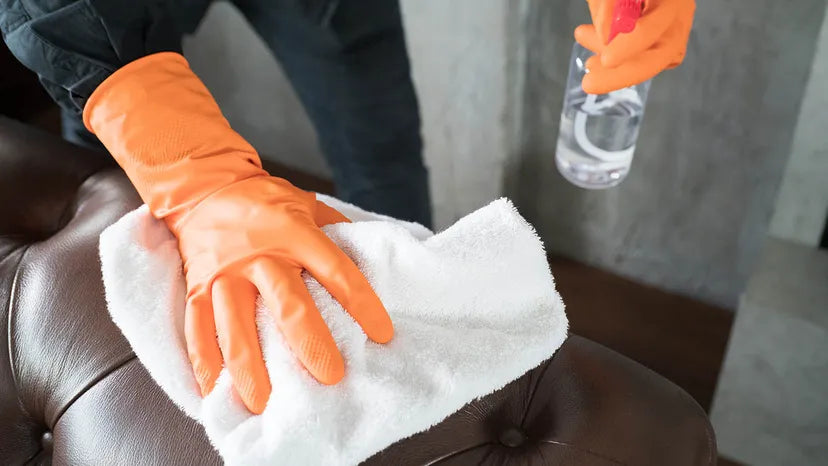
Spot Cleaning Tips & Techniques
Spot cleaning is a targeted approach to address specific stains or spills on your leather items without needing to clean the entire surface.
Here are some effective spot cleaning techniques to help you tackle common stains on leather:
1. Identify the Stain
Before you begin spot cleaning, identify the type of stain you're dealing with.
Common stains on leather include ink, oil, food, and water stains.
Knowing the type of stain will help you choose the appropriate cleaning method.
2. Blot the Stain
For liquid stains like water or spilled drinks, start by blotting the stain with a clean, absorbent cloth or paper towel.
Avoid rubbing the stain, as this can spread it further and potentially damage the leather.
3. Use a Gentle Cleaner
For non-oily stains like water or food, you can use a mild leather cleaner or a solution of mild soap and water.
Dampen a clean cloth with the cleaner or soapy solution and gently blot the stained area.
Avoid saturating the leather with too much liquid.
4. Spot Test
Before applying any cleaner to the stained area, it's essential to spot test it in an inconspicuous area to ensure that it won't cause any damage or discoloration to the leather.
Oil-Based Stains
For oil-based stains like grease or makeup, sprinkle a small amount of cornstarch or talcum powder onto the stained area and let it sit for several hours or overnight.
The powder will absorb the oil from the leather.
Afterward, gently brush away the powder with a soft brush.
Ink Stains
Ink stains can be particularly challenging to remove from leather.
If the ink is still wet, blot it immediately with a clean cloth to absorb as much of the ink as possible.
For dried ink stains, you can try using a small amount of rubbing alcohol on a cotton swab to gently dab at the stain.
Be sure to spot test the alcohol in an inconspicuous area first to ensure it won't damage the leather.
Nasty Odors
If you find your leather good is giving off a nasty odor (usually due to improper storage), we recommend using baking soda to rid yourself of this.
Place your leather good in a bag with baking soda and leave overnight.
5. Dry Thoroughly
After spot cleaning, allow the leather to air dry naturally at room temperature.
Avoid using heat sources to dry the leather, as this can cause it to dry out and potentially crack.
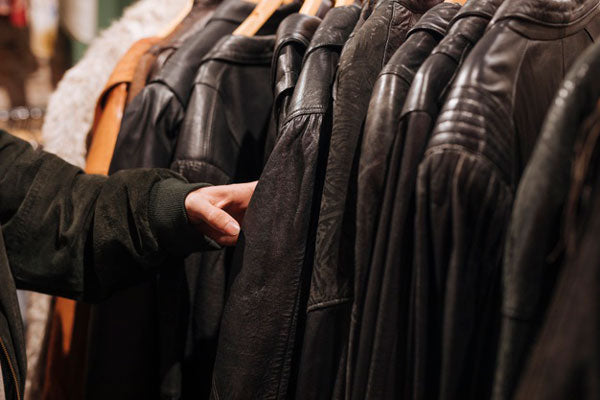
Treating Stains and Spills
Stains and spills are inevitable when it comes to owning leather items, but knowing how to effectively treat them can help you maintain the beauty and longevity of your leather.
Here are some steps to follow when treating stains and spills on leather:
1. Act Quickly
The key to successfully treating stains and spills on leather is to act quickly.
As soon as a spill occurs or you notice a stain, address it promptly to prevent it from setting into the leather.
2. Blot the Spill
If the spill is liquid, such as water, coffee, or wine, start by blotting the spill with a clean, absorbent cloth or paper towel.
Avoid rubbing the spill, as this can spread it further and potentially damage the leather.
3. Absorb Excess Liquid
For spills that have soaked into the leather, use a clean, dry cloth to absorb as much of the liquid as possible.
Press the cloth firmly onto the stained area to draw out the moisture.
4. Use a Leather Cleaner
Once you've removed as much of the spill as possible, use a leather cleaner that is suitable for the type of leather you're cleaning.
Apply a small amount of cleaner to a clean cloth and gently blot the stained area.
A DIY homemade alternative can be made with household products using dish soap as a disinfectant and water. You can also use a solution using lemon juice and part water.
Follow the manufacturer's instructions for application and be sure to test the cleaner in an inconspicuous area first.
5. Dry Thoroughly
After treating the stain, allow the leather to air dry naturally at room temperature.
Avoid using heat sources to dry the leather, as this can cause it to dry out and potentially crack.
6. Condition the Leather
Once the leather is dry, apply a leather conditioner to replenish its natural oils and keep it soft and supple.
If you’re not able able to find a professional leather conditioner, we’d recommend using a small amount of saddle soap or olive oil as alternatives.
Follow the manufacturer's instructions for application and be sure to buff away any excess conditioner with a clean cloth.
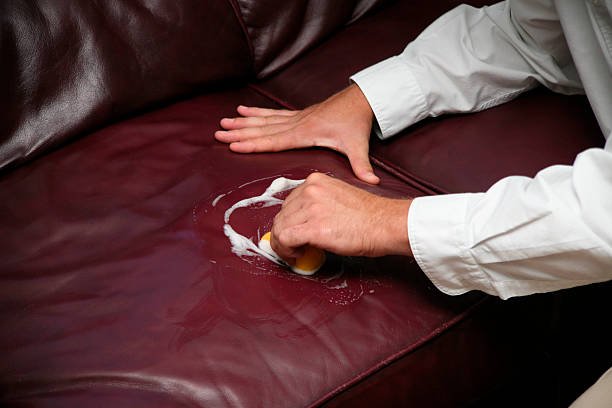
How to Condition Leather
Just like your skin, leather needs regular moisturizing and conditioning to stay soft, supple, and resistant to cracking or drying out.
Conditioning and moisturizing leather is an essential step in its care routine.
Here's how to effectively condition and moisturize your leather items:
1. Choose the Right Conditioner
Select a leather conditioner that is suitable for the type of leather you're treating.
Different types of leather may require different types of conditioners.
For example, aniline leather may need a conditioner specifically formulated for aniline leather, while pigmented leather may require a different type of conditioner.
Always follow the manufacturer's instructions for application.
2. Clean the Leather
Before conditioning, it's essential to ensure that the leather is clean and free from dust, dirt, and any surface stains.
Use a mild leather cleaner or a solution of mild soap and water to gently clean the leather, then allow it to dry completely before applying conditioner.
3. Apply the Conditioner
Once the leather is clean and dry, apply a small amount of conditioner to a clean, lint-free cloth or sponge.
Gently rub the conditioner into the leather using circular motions, working it into the surface evenly.
Pay particular attention to areas that may be prone to dryness, such as seams or creases.
4. Allow Time to Absorb
After applying the conditioner, allow it to absorb into the leather for a few minutes.
This allows the conditioner to penetrate deep into the leather fibers and replenish the natural oils.
5. Buff Away Excess
After the conditioner has had time to absorb, use a clean cloth to gently buff away any excess conditioner from the surface of the leather.
This helps to ensure an even application and prevents any excess conditioner from leaving a greasy residue.
6. Repeat as Needed
Depending on the condition of the leather and how frequently it's used, you may need to condition it regularly to keep it well-moisturized.
Follow the manufacturer's recommendations for frequency of application, but generally, conditioning leather every 6 to 12 months is a good rule of thumb for maintenance.
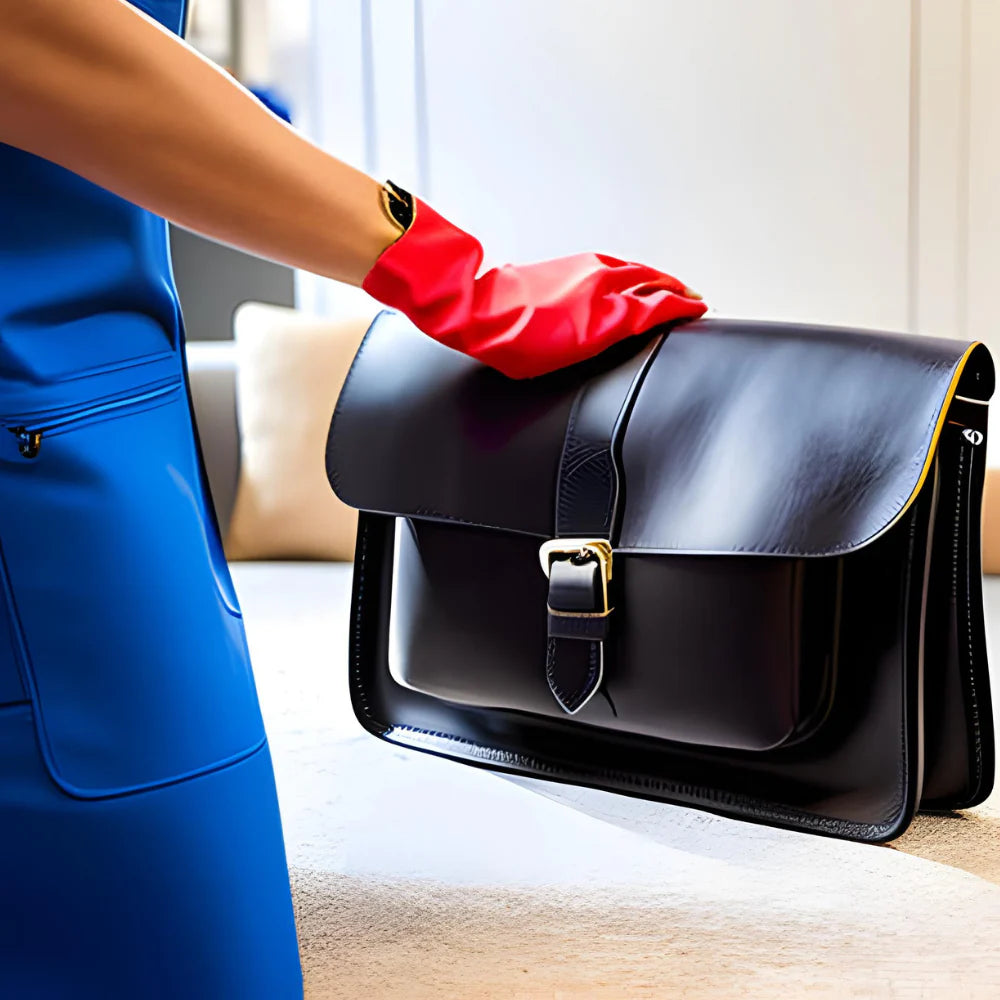
Preventative Maintenance Tips
Preventative maintenance is key to keeping your leather items in top condition for years to come.
By following these simple tips, you can minimize wear and tear on your leather and prolong its lifespan:
1. Keep Leather Away from Direct Sunlight
Prolonged exposure to sunlight can cause leather to fade, dry out, and become brittle.
To prevent this, avoid placing leather items in direct sunlight for extended periods.
If possible, use curtains or blinds to block out direct sunlight, especially for leather furniture, any other upholstery and car interiors.
2. Avoid Exposure to Heat Sources
Heat sources such as radiators, fireplaces, and heating vents can also cause leather to dry out and crack.
Keep leather items away from these sources of heat to prevent damage.
Additionally, avoid leaving leather items in hot cars, as extreme heat can be particularly damaging to leather.
3. Use Leather Protection Products
Consider using a leather protector or waterproofing spray to add an extra layer of protection to your leather items.
These products can help repel water, dirt, and stains, making it easier to clean and maintain your leather.
4. Rotate Leather Items
If you have multiple leather items, such as shoes, bags, or jackets, rotate their use to prevent excessive wear on any one item.
This allows each item to have time to rest and recover between uses, prolonging its lifespan.
5. Store Leather Properly
When not in use, store leather items in a cool, dry place away from direct sunlight and heat sources.
Use breathable storage containers or garment bags to protect leather items from dust and moisture.
Avoid storing leather items in plastic bags or airtight containers, as this can trap moisture and lead to mold or mildew growth.
If you do get mildew growth, we recommend mixing a homemade solution. Mix equal parts white vinegar and distilled water, then dab it on the mildew area and let it sit for a few minutes before blotting.
6. Clean Spills Promptly
Accidents happen, but it's essential to clean up spills on leather items promptly to prevent stains from setting in.
Use a clean, absorbent cloth to blot away excess liquid, then follow up with a gentle leather cleaner to remove any remaining residue.
7. Regularly Clean and Condition
Regular cleaning and conditioning are essential to maintaining the beauty and integrity of leather.
Follow a regular cleaning schedule and be sure to condition your leather items at least once or twice a year to keep them moisturized and supple.
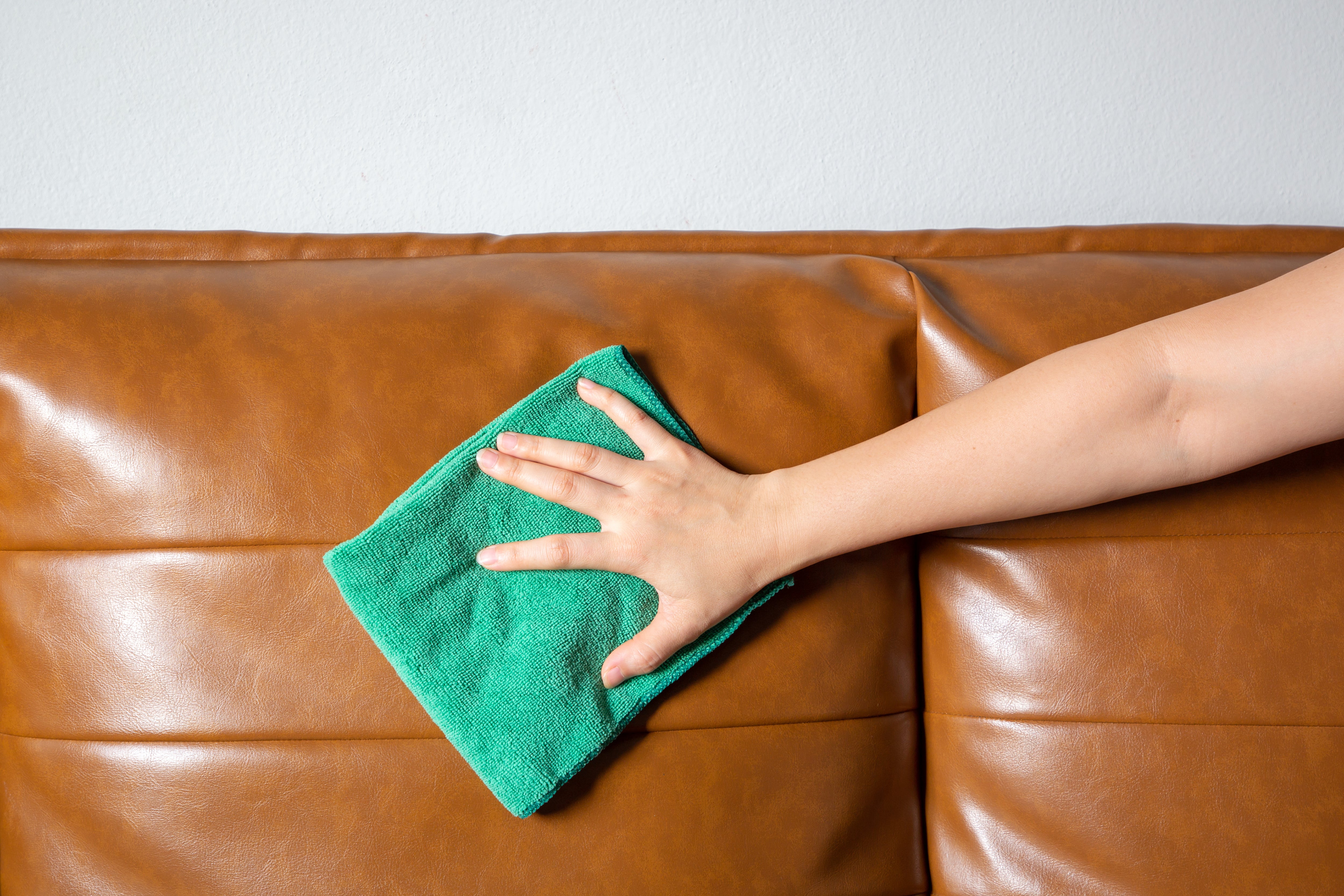
FAQs
1. How often should I clean my leather items?
It's a good idea to deep clean your leather items regularly to prevent dirt and grime from building up.
How often you clean them depends on how frequently they're used and the environment they're exposed to.
Generally, aim to clean leather items every few months, with more frequent cleaning for heavily used items.
2. Can I use household cleaners on leather?
It's best to avoid using household cleaners on leather, as they can contain harsh chemicals that can damage or discolor the leather.
Instead, use a mild leather cleaner specifically formulated for the type of leather you're cleaning.
3. How do I remove ink stains from leather?
Ink stains can be challenging to remove from leather.
If the ink is still wet, blot it immediately with a clean cloth to absorb as much of the ink as possible.
For dried ink stains, you can try using a small amount of rubbing alcohol on a cotton swab to gently dab at the stain.
Be sure to spot test the alcohol in an inconspicuous area first to ensure it won't damage the leather.
4. Can I condition leather too often?
While conditioning leather is essential for keeping it moisturized and supple, it is possible to over-condition leather, especially if you use a heavy conditioner or apply it too frequently.
Follow the manufacturer's recommendations for frequency of application, and avoid over-conditioning your leather items.
5. How do I prevent leather from cracking?
Keeping leather moisturized is key to preventing it from drying out and cracking.
Regularly clean and condition your leather items to replenish the natural oils and keep them soft and supple.
Additionally, avoid exposing leather to excessive heat or sunlight, as this can cause it to dry out and become brittle.
6. Can I clean suede leather with water?
Suede leather is more delicate than other types of leather and can be easily damaged by water.
Instead of using water to clean suede, use a suede brush to gently remove dirt and stains from the surface.
If necessary, you can use a small amount of specialized suede cleaner, but be sure to follow the manufacturer's instructions carefully.
7. Should I store leather items in a specific way?
When storing leather items like leather jackets, leather bags and leather shoes, it's essential to keep them in a cool, dry place away from direct sunlight and heat sources.
Use breathable storage containers or garment bags to protect leather items from dust and moisture, and avoid storing them in plastic bags or airtight containers, as this can trap moisture and lead to mold or mildew growth.
